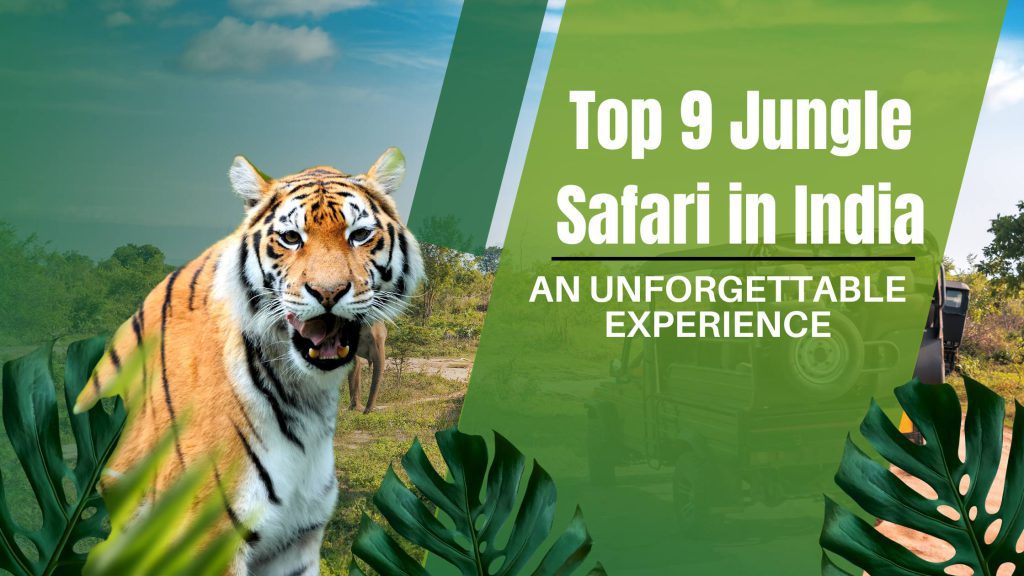India, a land of incredible diversity, boasts a rich tapestry of landscapes, cultures, and wildlife. For adventurers seeking an immersive encounter with nature’s untamed beauty, exploring the country’s wilderness through jungle safaris is an unparalleled experience. From the regal Bengal Tigers to the elusive snow leopards, India’s jungles are a treasure trove of biodiversity. Let’s embark on a journey through the top 9 jungle safari in India, each offering a unique wildlife experience.
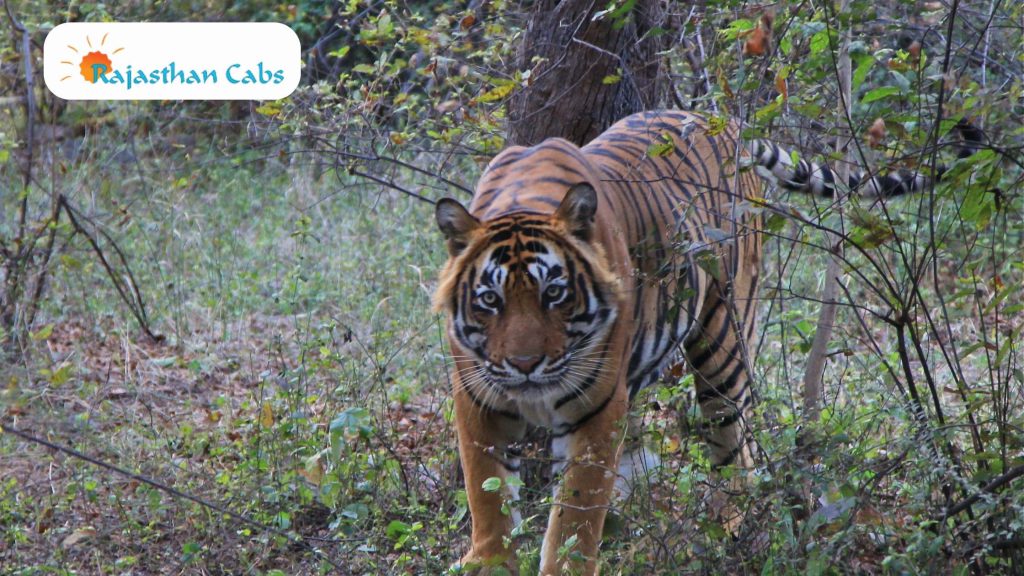
1. Ranthambore National Park
Nestled in Rajasthan‘s rugged terrain, Ranthambore National Park is an epitome of majestic wilderness. Spanning over 1300 square kilometers, this reserve is a sanctuary for the endangered Bengal Tiger. Beyond the tigers, Ranthambore houses a diverse range of wildlife, including Sloth Bears, Wild Boars, Monitor Lizards, and an array of avian species. The park’s desert landscape adds an extra layer of regality to the wildlife sightings.
Must Read : Delhi Diaries: 36 Unforgettable Places to Visit in Delhi
Best Time for Jungle Safari in India at Ranthambore:
The optimal time to explore Ranthambore’s wildlife extravaganza is from March to May, offering favorable conditions for wildlife sightings.
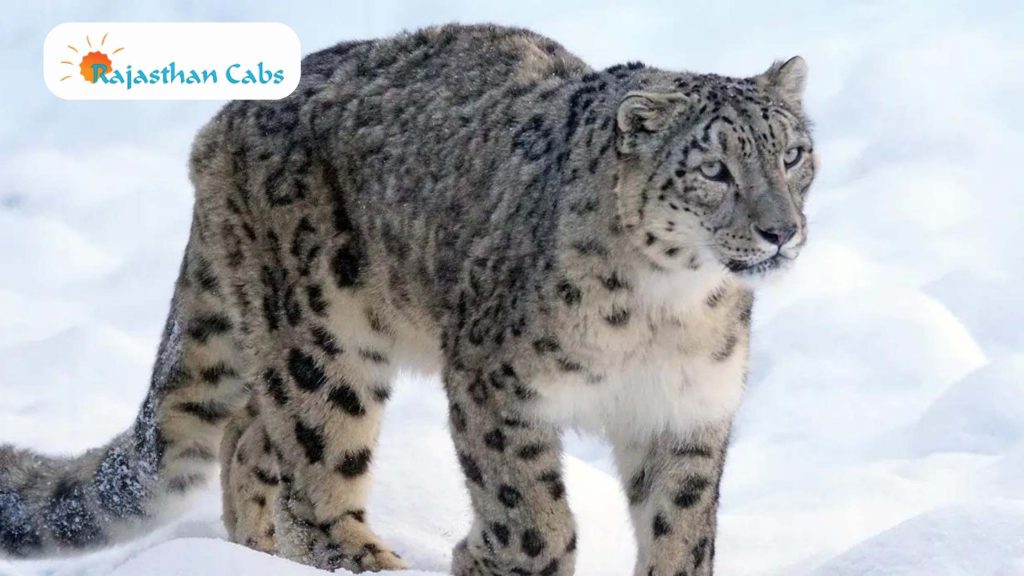
2. Hemis National Park
Nestled amidst the snow-clad peaks of Ladakh, Hemis National Park stands as one of the highest altitude parks globally. The park’s chilly climate and massive snowfall provide an ideal habitat for rare species like the elusive snow leopard, ibex, blue sheep, snowcocks, and Tibetan argali sheep. Visitors can revel in the serene landscape while spotting these elusive creatures against the backdrop of Ladakh’s breathtaking vistas.
Best Time for Jungle Safari in India at Hemis:
Venture into Hemis National Park from May to September for an opportunity to witness these magnificent creatures thriving in their natural habitat.
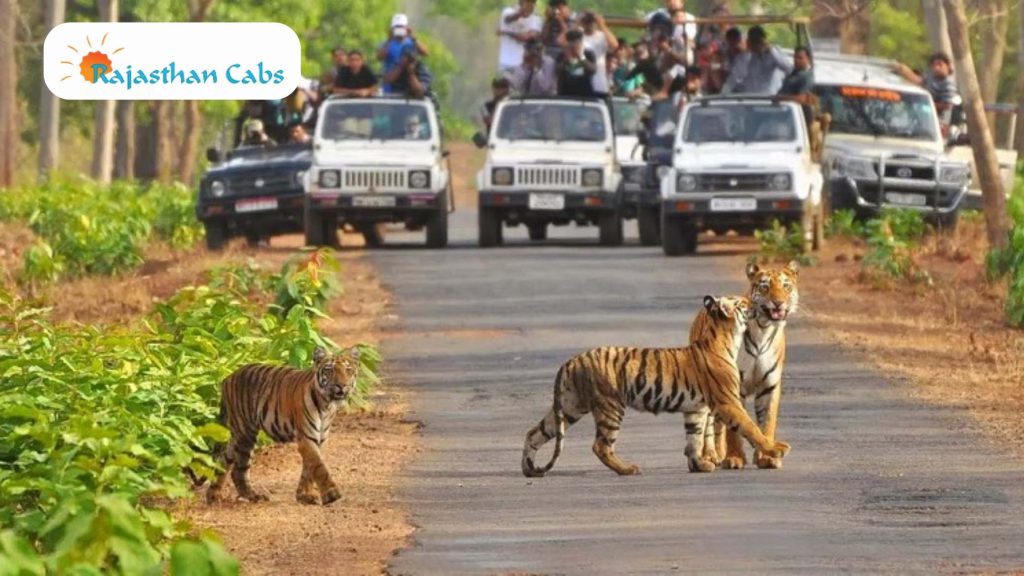
3. Jim Corbett National Park
As the first national park in Asia, Jim Corbett National Park holds historical significance in India’s conservation efforts. Named after the legendary tiger hunter and conservationist Jim Corbett, this park is a haven for Bengal Tigers, Asiatic Elephants, various species of deer, and a myriad of birdlife. Divided into four zones, each offers a unique wildlife experience, from dense forests to grasslands and riverbanks.
Must Read : Why You Should Choose the Golden Triangle Tour in India
Best Time for Jungle Safari in India at Jim Corbett:
Plan your visit between March to May for an enthralling safari experience amidst Jim Corbett’s diverse ecosystems.
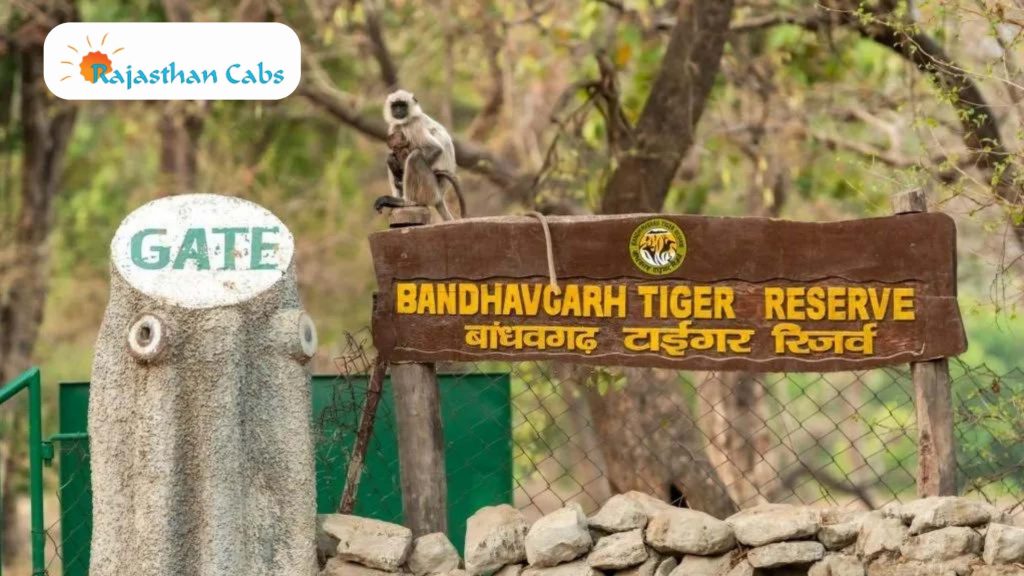
4. Bandhavgarh National Park
Once a royal hunting ground, Bandhavgarh National Park in Madhya Pradesh has transformed into a thriving tiger reserve. Its dense tiger population makes it one of India’s most densely populated tiger reserves. Beyond tigers, visitors can spot leopards, Neelghai, Barking Deer, Bengal Fox, and a variety of avian species. The park’s historical significance and vibrant wildlife allure adventurers seeking a brush with nature’s raw beauty.
Best Time for Jungle Safari in India at Bandhavgarh:
Explore Bandhavgarh’s lush forests and wildlife from October to June, ensuring an exhilarating safari experience.
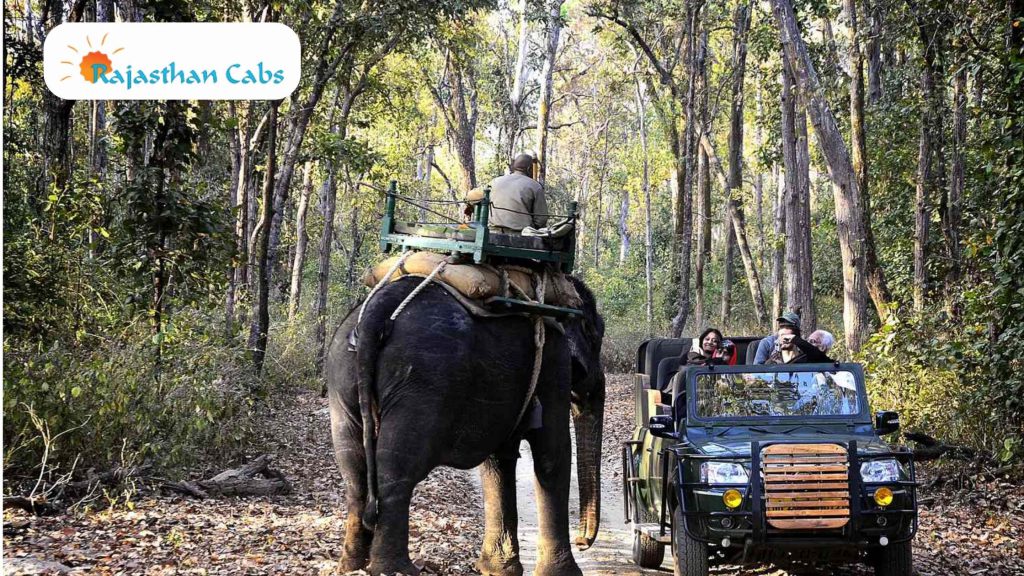
5. Kanha National Park
Rudyard Kipling’s ‘The Jungle Book’ found its inspiration in Kanha National Park’s captivating landscapes and diverse wildlife. Spread across four zones, Kanha offers an enchanting wildlife experience, reminiscent of Mowgli’s adventures. Panthers, Bears, Pythons, and the majestic Bengal Tiger roam these lands, creating an ambiance straight out of a storybook.
Best Time for Jungle Safari in India at Kanha:
Embark on a safari from October to mid-June for an enchanting journey through Kanha’s diverse ecosystems.
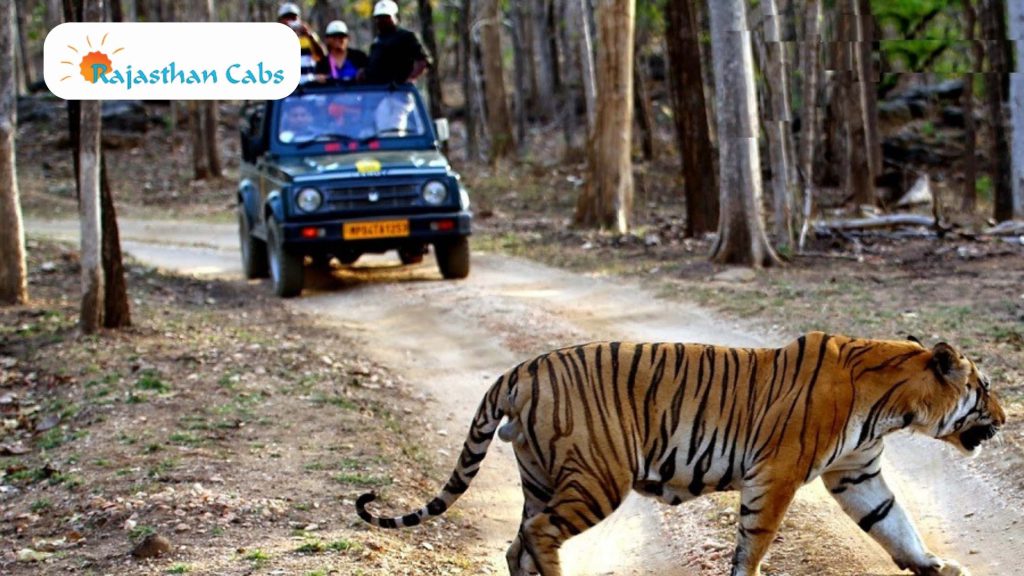
6. Pench National Park
Stretching across Madhya Pradesh and Maharashtra, Pench National Park is renowned for its tiger reserves and diverse vegetation. The park’s unique feature lies in its varied landscapes, from moist areas to arid regions, fostering diverse flora and fauna. Apart from tigers, Pench shelters Nilgais, Leopards, and Wild Boars amidst its verdant expanse.
Best Time for Jungle Safari in India at Pench:
Explore Pench’s rich biodiversity between October to June, ensuring an immersive wildlife encounter.
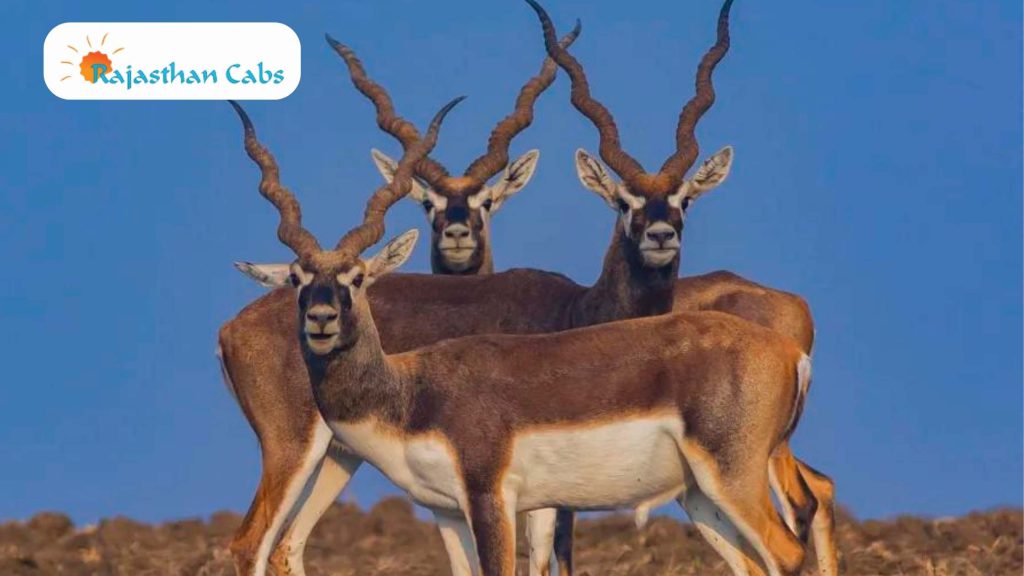
7. Satpura National Park
Nestled in Madhya Pradesh’s heartland, Satpura National Park boasts rugged terrains and dense jungles, providing a perfect habitat for various wildlife species. The park’s unique topography sets the stage for wildlife enthusiasts to spot spotted deer, sloth bears, blackbucks, sambars, antelopes, porcupines, and otters thriving in their natural habitat.
Best Time for Jungle Safari in India at Satpura:
Plan your safari adventure from October to April for an exhilarating wildlife encounter amidst Satpura’s scenic landscapes.
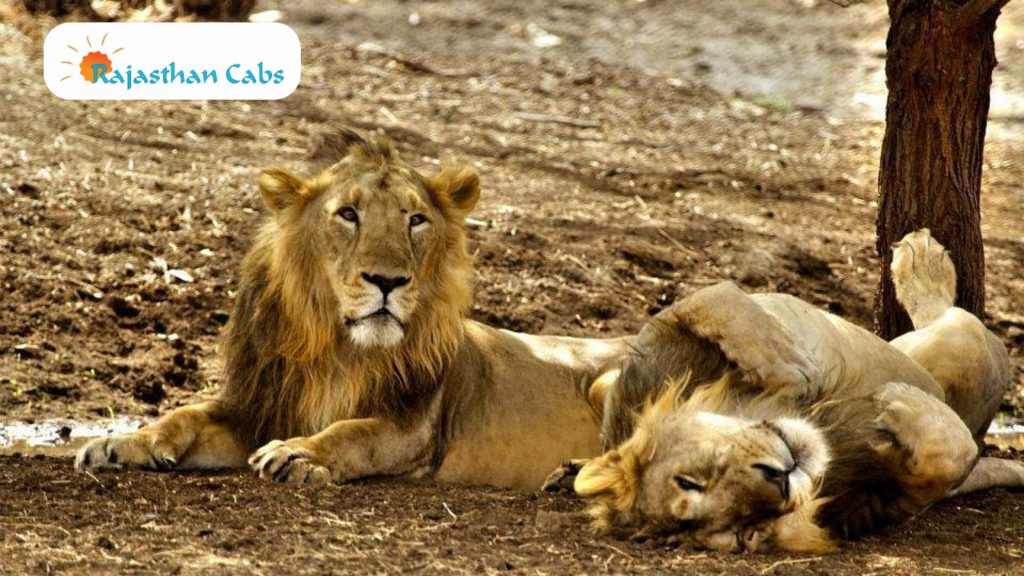
8. Sasan-Gir Wildlife Sanctuary
Situated in Gujarat, Sasan-Gir Wildlife Sanctuary stands as the sole abode of the Asiatic lions worldwide. The sanctuary’s scrublands and dry forests provide a captivating backdrop to this unique wildlife encounter. Witnessing these majestic creatures in their natural habitat is an unparalleled experience.
Must Read : The Convenience and Charm of Private Drivers in India
Best Time for Jungle Safari in Gir:
Experience the wilderness of Sasan-Gir from December to April, ensuring an unforgettable encounter with the Asiatic lions.
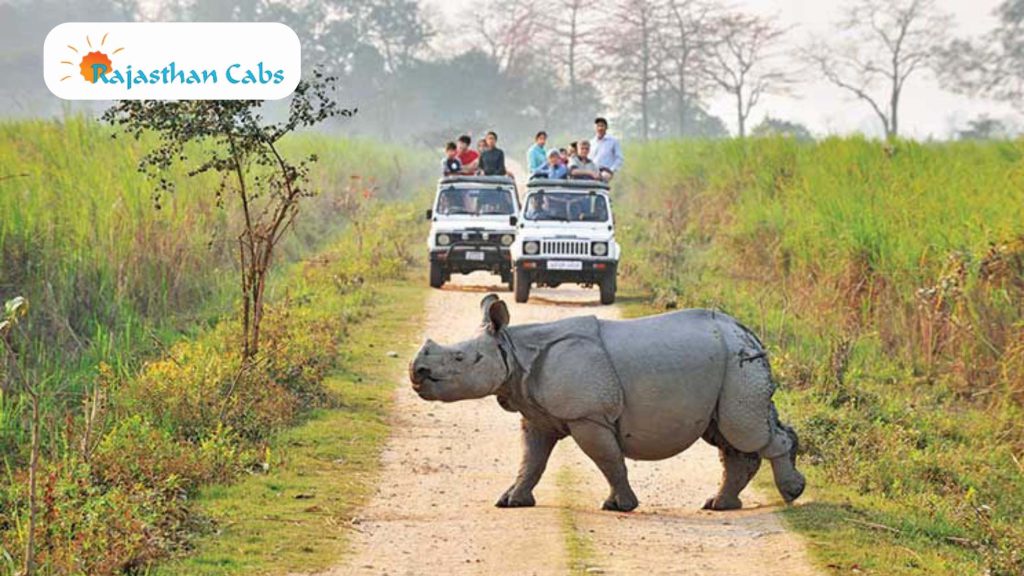
9. Kaziranga National Park
Declared a UNESCO World Heritage Site, Kaziranga National Park in Assam shelters the largest population of one-horned rhinoceroses in the world. Nestled amidst Assam’s lush landscapes, the park is a sanctuary for elephants, panthers, and various avian species. The park’s grasslands and wetlands create a thriving ecosystem.
Must Read : 10 Places to visit in Varanasi for an Unforgettable Experience
Best Time for Jungle Safari in India at Kaziranga:
Kaziranga National Park, nestled in the northeastern state of Assam, is a treasure trove of biodiversity, famed for its population of the endangered one-horned rhinoceros. The park, a UNESCO World Heritage Site, offers a mesmerizing wilderness experience through jungle safaris.
Seasons and Wildlife Sightings:
The ideal time for a jungle safari in Kaziranga typically spans from November to April, divided into two prominent seasons:
- Winter Season (November to February):
- Safari Highlights: The winter months bring pleasant weather, making it an excellent time for wildlife sightings. The vegetation is less dense, facilitating clearer views of animals, including the iconic one-horned rhinoceros, elephants, tigers, deer, and numerous bird species.
- Climate: Mild temperatures and drier conditions prevail, enhancing visibility during safaris. The park’s varied landscapes, from tall grasslands to marshes and woodlands, become more accessible.
- Post-Monsoon Season (March to April):
- Safari Highlights: As the temperatures rise, wildlife activity increases, offering splendid opportunities for wildlife enthusiasts. The post-monsoon season witnesses animals congregating around water sources, making it easier to spot them.
- Climate: The park starts transitioning to the hot and humid pre-monsoon weather. While temperatures begin to soar, the lush greenery and the thriving wildlife compensate for the weather conditions.
Choosing the Right Safari Time:
- Morning Safari: Early morning safaris are recommended for better wildlife sightings, especially for birdwatchers and those keen on spotting elusive predators like tigers and leopards.
- Evening Safari: Afternoon or evening safaris allow visitors to witness the park’s mesmerizing sunset hues and observe animals preparing for the night, offering a different perspective of the wildlife activities.
Notes for Safari Planning:
- Bookings: It’s advisable to book jungle safari permits and accommodations in advance, particularly during the peak season, to secure your preferred safari timing and ensure a hassle-free experience.
- Weather Consideration: While winter months offer better visibility, the post-monsoon season has its charm with the lush landscape and increased wildlife activity. Personal preferences and tolerance for weather conditions can influence the choice of the safari time.
Exploring Kaziranga through a jungle safari during these preferred seasons guarantees an awe-inspiring experience, allowing visitors to witness the untamed beauty of nature and the diverse wildlife thriving in this remarkable sanctuary.
Frequently Asked Questions (FAQS)
Yes, trained guides and naturalists accompany visitors during safaris to provide information about the wildlife, their behavior, and the ecosystem, enhancing the overall safari experience.
While parks like Ranthambore, Bandhavgarh, and Kanha are known for their higher tiger populations, spotting tigers in other parks depends on various factors, including timing, luck, and the park’s specific tiger population.
Yes, each park has its set of guidelines and regulations to ensure visitors’ safety and conservation of wildlife. These guidelines typically include maintaining silence, not feeding animals, and staying within designated areas.
Safari bookings can be made through the respective park’s official websites or authorized booking agents. It’s advisable to book in advance, especially during peak seasons, to secure a spot for the safari.
Many parks have accommodation options within or nearby their premises. These accommodations range from budget-friendly lodges to luxury resorts, catering to various preferences and budgets of visitors.
Yes, many of the jungle safaris in India are family-friendly. However, the suitability might depend on the age and interest of the children. Jeep safaris are generally more accessible for families with children due to comfort and safety.
Most parks offer jeep safaris, canter safaris, elephant safaris, and boat rides, varying based on the park’s rules and wildlife availability. Each option provides a unique perspective on exploring the wildlife.
Yes, jungle safaris are generally safe when following guidelines and instructions provided by park authorities. Visitors are accompanied by trained guides and wildlife experts during the safaris to ensure safety and provide an informative experience.
India’s jungles are rich in biodiversity. Visitors can spot various animals including Bengal Tigers, Asiatic Elephants, Leopards, Snow Leopards, Rhinoceroses, Bears, Sloth Bears, Wild Boars, Nilgais, and diverse bird species, depending on the park and region.
The ideal times vary depending on the region and park. However, generally, the best times for jungle safari in India are as follows:
Ranthambore: March to May
Hemis: May to September
Jim Corbett: March to May
Bandhavgarh: October to June
Kanha: October to mid-June
Pench: October to June
Satpura: October to April
Gir: December to April
Kaziranga: November to April

